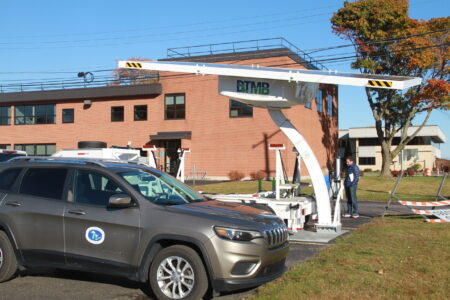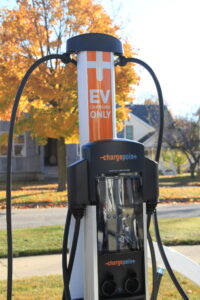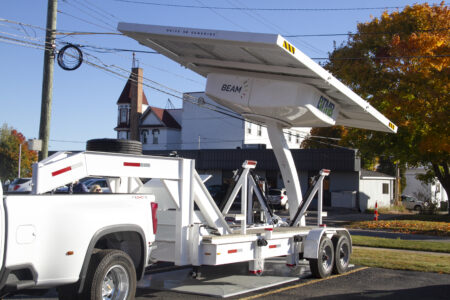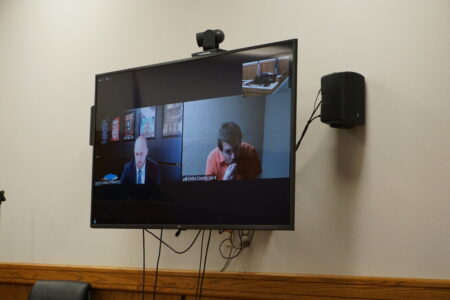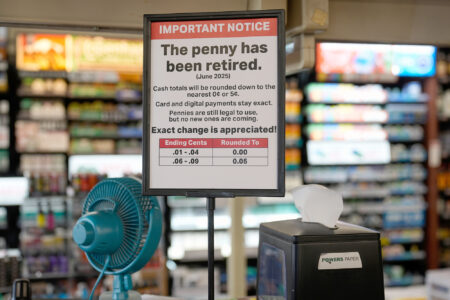EV station in Escanaba part of state directive
- A gas-powered State of Michigan Jeep sits before a new solar-powered electric-vehicle charging station being set up behind the Secretary of State office in Escanaba. Though the local office does not yet have EVs, the plan is to gradually transition them in. (R. R. Branstrom | Daily Press)
- The new Level 2 electric vehicle station in the parking lot behind 305 Ludington St. will be available for public use and has two chargers attached. (R. R. Branstrom | Daily Press)
- A solar-powered charger for electric vehicles is delivered to the Secretary of State office in Escanaba on Thursday. It is one of only four such stations launched in the state as an early step towards meeting the governor’s directive to have a zero-emission fleet by 2033. (R. R. Branstrom | Daily Press)
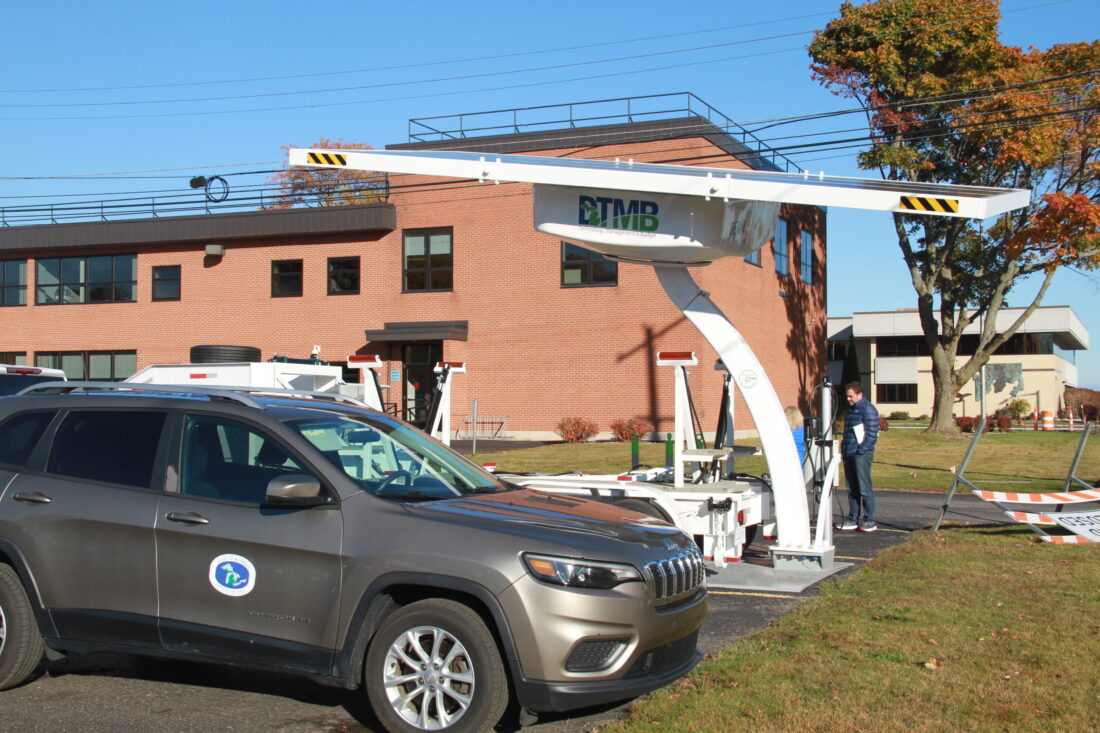
A gas-powered State of Michigan Jeep sits before a new solar-powered electric-vehicle charging station being set up behind the Secretary of State office in Escanaba. Though the local office does not yet have EVs, the plan is to gradually transition them in. (R. R. Branstrom | Daily Press)
ESCANABA — A solar-powered electric vehicle charging station installed at the Secretary of State building in Escanaba on Thursday is part of an initiative to transition the state government’s light-duty fleet to zero emissions by 2033.
The new location has the capacity to charge two vehicles at a time and will be available for public use.
Governor Gretchen Whitmer signed an executive directive in December 2023 ordering state agencies “to begin the process of converting vehicles owned and used by the state … to zero emission vehicles, with a goal of completing that conversion by 2033 for light-duty vehicles and 2040 for medium- and heavy-duty vehicles.”
The directive is part of a greater movement toward clean energy. However, it’s a tall order: Of the 14,482 vehicles owned or leased to comprise the state fleet, only 10 were electric as of April 2024. Now, the fleet contains about 27 EVs, according to State Assistant Administrator Deb Stevens, who works in the Office of Support Services for the Department of Technology, Management and Budget.
She was on site in Escanaba yesterday along with others from Vehicle and Travel Services, a division of the DTMB.
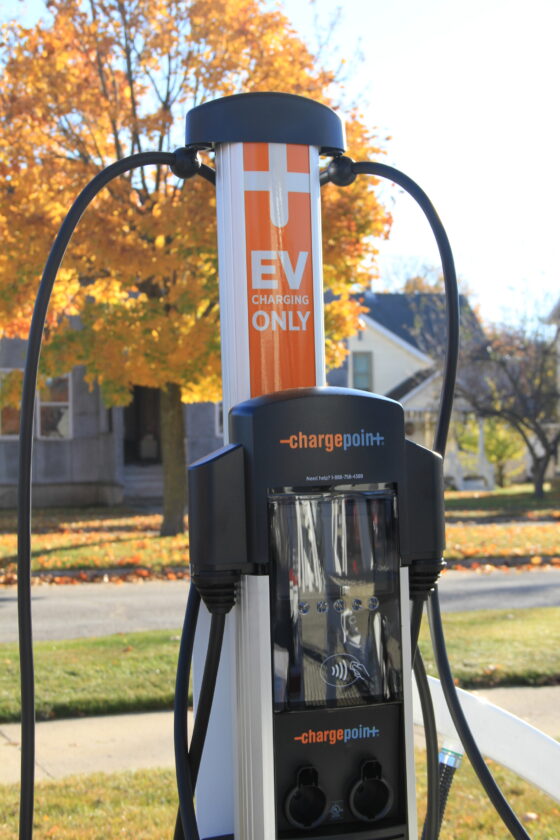
The new Level 2 electric vehicle station in the parking lot behind 305 Ludington St. will be available for public use and has two chargers attached. (R. R. Branstrom | Daily Press)
The process of transitioning to an EV fleet is moving gradually for multiple reasons. One is because ordering vehicles takes a long time and the state is at the mercy of manufacturers’ production schedules. Another is the goal isn’t to force something unfamiliar on people but to educate them on EVs first.
Though the technology is improving and has become more common in recent years, some people still have reservations.
“It’s almost like we have to go out and market them, because people have a lot of misconceptions and a lot of concerns about EVs,” Stevens said. “(But) the technology seems so much different than it was even five years ago, you know, because everything’s getting better and better.”
On Wednesday, the day before the installation of the charging station in Escanaba, the team from the DTMB was at Northern Michigan University, answering questions about EVs. NMU and a handful of other colleges and universities rent vehicles from the state fleet and will therefore need to become familiar with EV tech.
During the next ordering cycle, about two dozen new EVs could be added to the state fleet. While some will become part of the motorpool, Stevens said they’ll probably send a couple to various offices for about two weeks at time to let staff practice with them before just swapping out the vehicles they’re comfortable with.
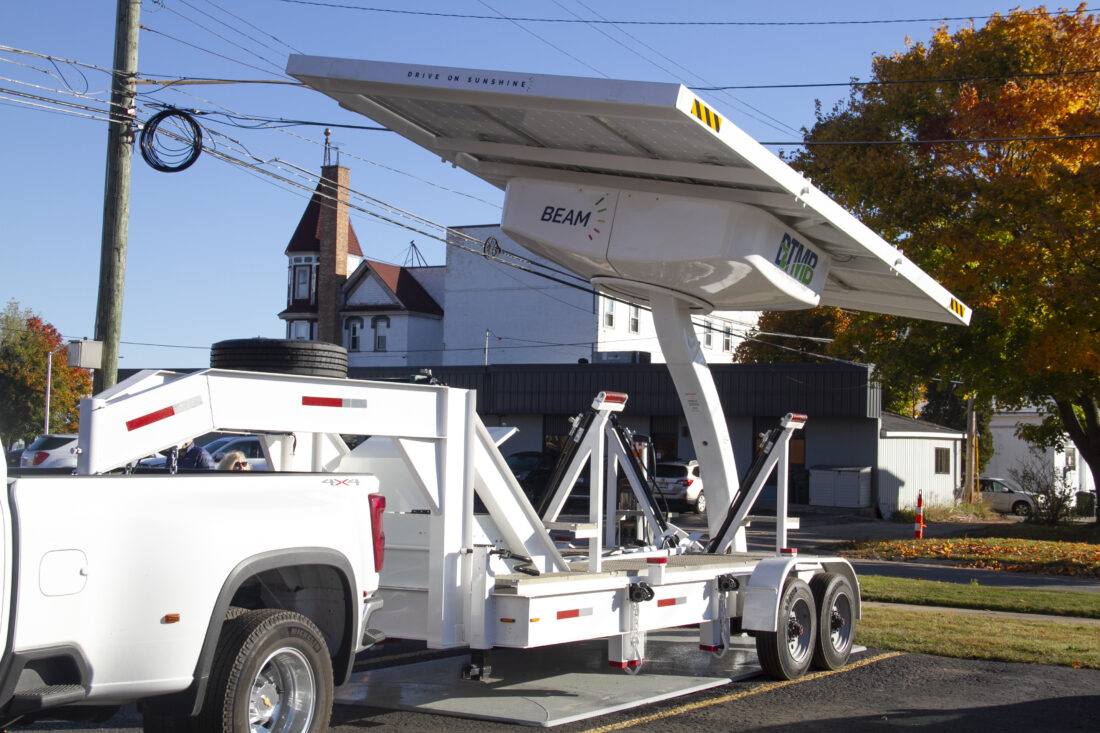
A solar-powered charger for electric vehicles is delivered to the Secretary of State office in Escanaba on Thursday. It is one of only four such stations launched in the state as an early step towards meeting the governor's directive to have a zero-emission fleet by 2033. (R. R. Branstrom | Daily Press)
“The buy-in is really important for the satisfaction, because we want people to want an EV rather than just take one,” State Assistant Administrator Michael Mowers said.
For now, the state has time to incorporate the EVs. It’s taking time to develop the infrastructure — charging stations — to support them. The Michigan Department of Transportation has awarded some contracts for the installation of stations along main trunk lines, but more rounds are to come. Each time, there’s a process to finding the right land, getting permits, taking bids and setting up contracts.
There are different levels for sources of EV charging. Level one is the lowest power, using a basic 120-volt outlet, and charges slowly — only adding a few miles of traveling distance in an hour of charging. Level two uses 240-volt AC electricity and outputs between about four to 20 kilowatt hours, or kWh. Level three stations, sometimes called “superchargers,” produce 50 to 350 kWh direct current.
The new unit brought to Escanaba this week is a level two and delivers roughly 5 kWh.
“This is in the middle of the range — should get you 15 to 20 miles in an hour,” Mowers said. “So not necessarily, you know, a full charge, but … vehicles would be able to charge overnight.”
The entire unit — steel base plate, solar panel, connectors, control board, user interface and all — is portable and was delivered on a special trailer with hydraulic lifts. The solar unit is an EV ARC from a brand called BEAM out of San Diego, and the payment mechanism is through ChargePoint, also from California.
The model is one of just four in a pilot program that placed the stations at state offices in Michigan.
“We looked at where we have state office buildings, and frankly, you know, we thought the U.P. gets ignored so much of the time,” said Stevens.
The station was placed behind the Secretary of State building at 305 Ludington St. Thursday morning and was operational by the afternoon.
The state office in Escanaba doesn’t yet have EVs, so right now, the station is serving the public.
Other EV charging stations in the immediate area are at Riverside Chevrolet and GMC at 5273 U.S. 41, Meijer at 505 N. 26th St. and Quality Inn and Suites at 2603 N. Lincoln Road. Pat’s Foods in Gladstone and the Admiral station at 720 N. Lincoln Road in Escanaba are slated to get chargers soon, according to PlugShare, which maps out EV stations to help drivers find charging locations.

